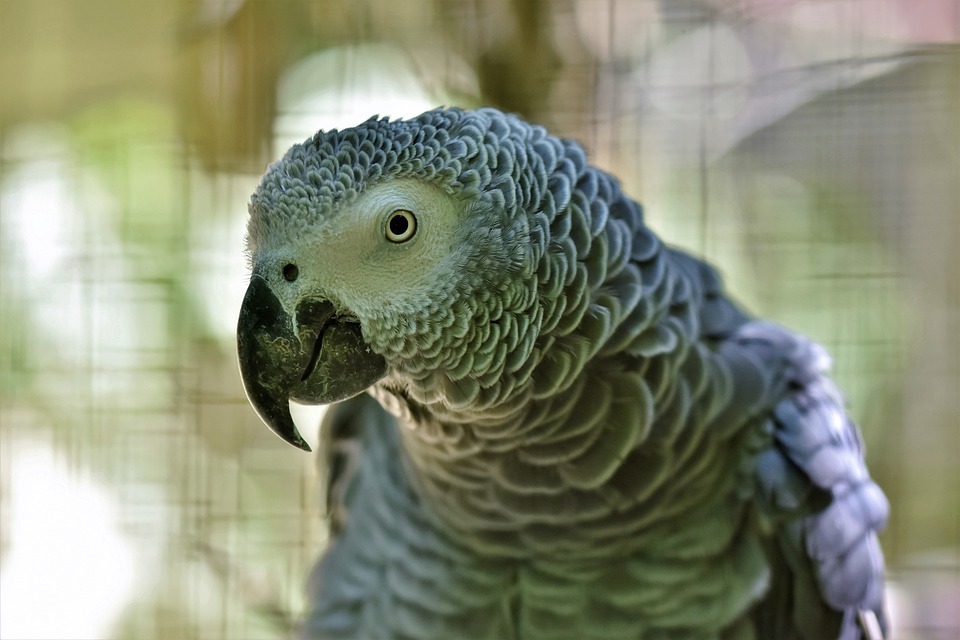The African Grey parrot is among the most popular pet birds that you can find in the pet trade, and for one primary reason: this bird species is the greatest talker among all parrots, which is why people are naturally drawn to it. Aside from its talking ability, this medium-sized parrot is smart and sociable, making it the perfect pet bird for almost anyone who loves it. If you think you can handle the African Grey parrot’s quirks and needs, make sure to read further to know how you can take care of one!
History
African Grey parrots are endemic to the equatorial areas of Africa, particularly in Cameroon, Congo, Angola, Ivory Coast, Kenya, Ghana, and Uganda. They inhabit coastal mangroves, dense forests, especially on the edges and in open savannah areas. These parrots are deemed to be the most intelligent of all parrots, possessing a cognitive level that is same as a 4- to 6-year-old child. Their impeccable intelligence gained it its moniker “The Einsteins of the Bird World.” These parrots can differentiate colors, shapes, materials, and objects with ease, which is why many parrot enthusiasts love them.
Characteristics of an African Grey parrot
Average size: More than 13 inches
Average weight: Less than 1 pound
Average life span: 40 to 60 years in captivity with proper care
An adult African Grey parrot is a medium-sized, dusty-looking bird that is gray in color with pigeon-like features. It has a bright red tail, orange eyes, and plumage with scalloped patterns. You can differentiate male and female African Grey parrots once they reach adolescence, which is at least 18 months old. A male African Grey parrot’s tail is solid red, while a female’s tail has a silver tip. A male’s wing undersides becomes darker, while a female’s remain light.
African Grey parrots may be intelligent and sociable, but when ignored, they can be depressed or angry. Keep in mind that intelligent birds are complex birds. They may demand interaction and lots of attention, but they are not cuddly birds.
They pick up sounds and words quickly. In fact, there was one instance wherein an African Grey parrot exposed a woman’s love affair by using the wife’s voice and repeating the other man’s name in front of the husband.
African Grey parrots are like toddlers, they are notorious for repeating every word they hear, so it’s better to watch your language whenever you are around these birds. They also like repeating the sounds of squeaking doors, fire alarms, microwave bells, ringtones, and other forms of sounds. Once they hear a sound, it’s almost impossible for them to unlearn it.
Caring for an African Grey parrot
Before adopting or buying an African Grey parrot, look for the following signs of illnesses first: fluffed up feathers, lethargy, discharge from the nose and/or mouth, agitated, and discolored poo. Make sure to ask the seller of the breeder about the history of the bird, and if it possesses special needs in order to thrive better.
A single African Grey parrot needs to have a spacious cage, particularly something that measures at least 40″(W) x 30″(D) x 65″(H). This is ideal to give your pet bird enough room for exercise. An open top cage with a perching area is also a great option to provide freedom and more interaction with your family. Provide your pet bird with a lot of toys, and don’t forget to teach it with tricks, words, and phrases. If left alone, it will enjoy the television or radio playing to keep it occupied.
Foraging is an essential part of their growth. It is their natural instinct, and it is a great way to exercise its body and mind. Provide a variety of perches with varying shapes and lengths so that they could exercise their feet regularly.
In the wild, African Grey parrots love feeding on leaves, fruits, bark, flowers, and insects. In captivity, they need premium formulated pellets supplemented with fresh fruits such as mango, melon, and pomegranate. Fresh leafy greens such as watercress, arugula, kale, sprouts, and seeds such as flaxseed and hemp are good occasional treats. Treats such as health table food, nuts, salad, and steamed green beans can also be given as rewards during training.

